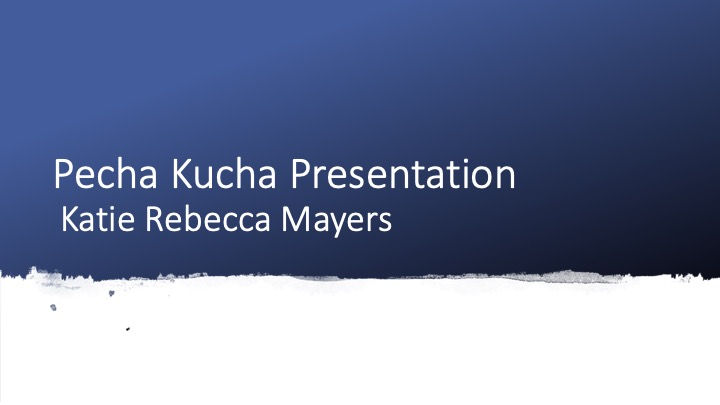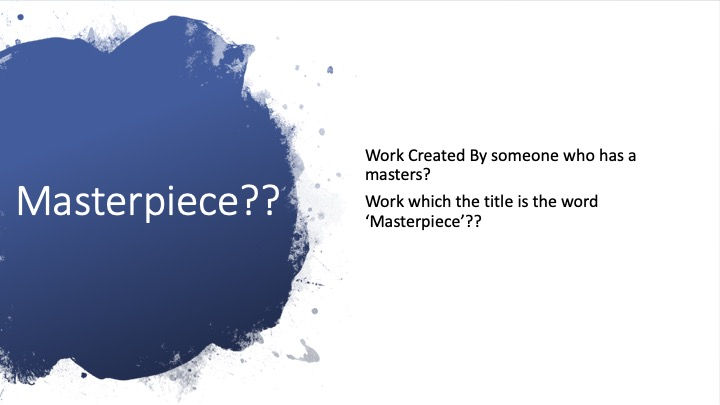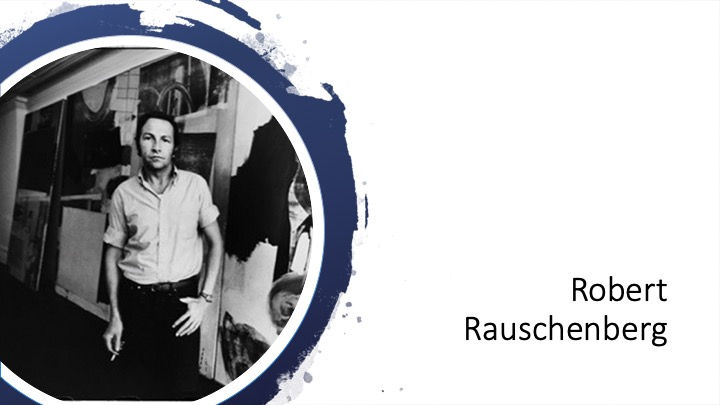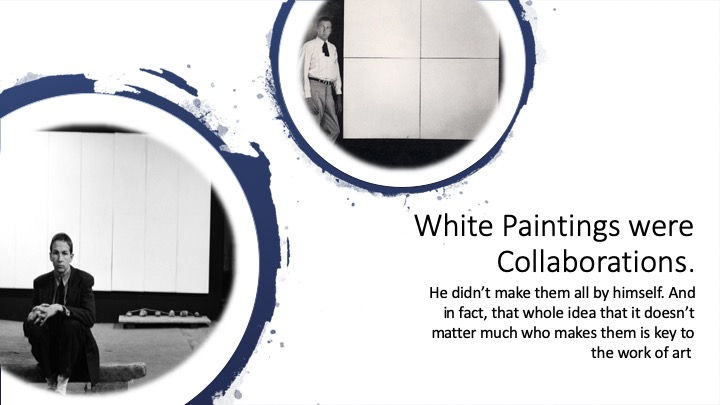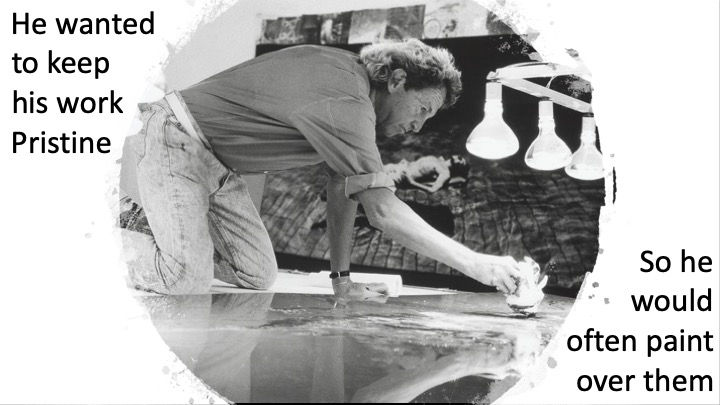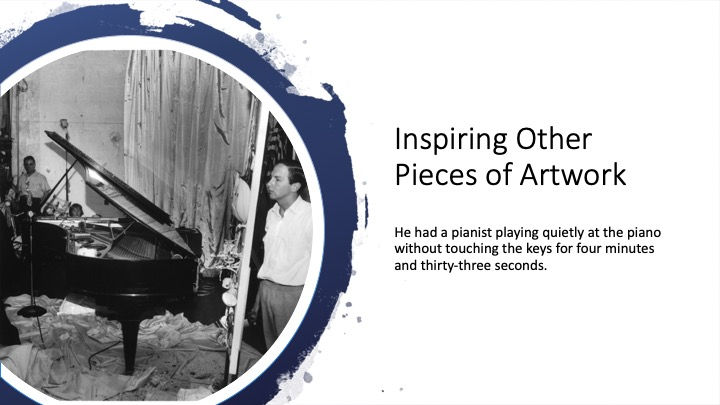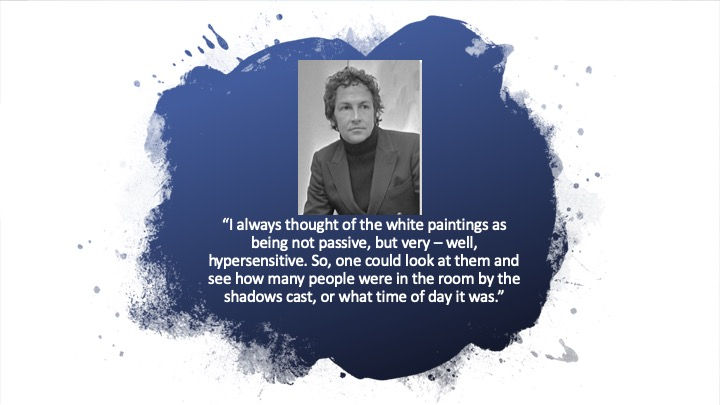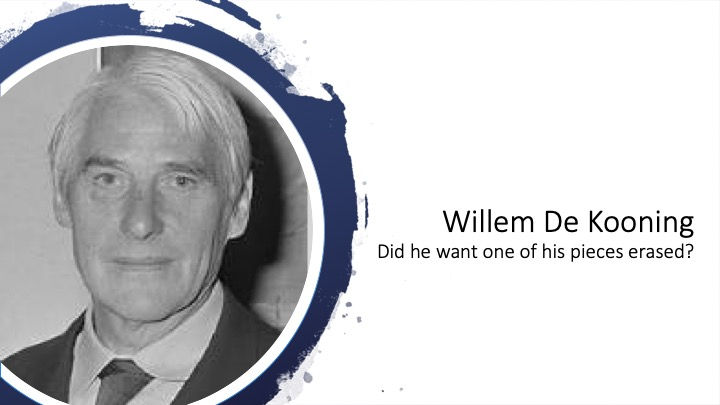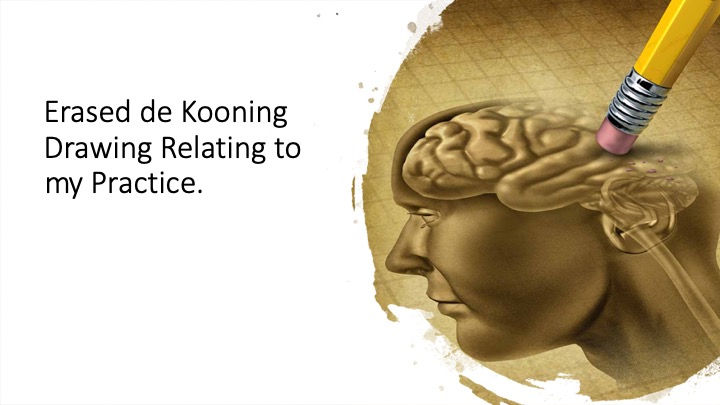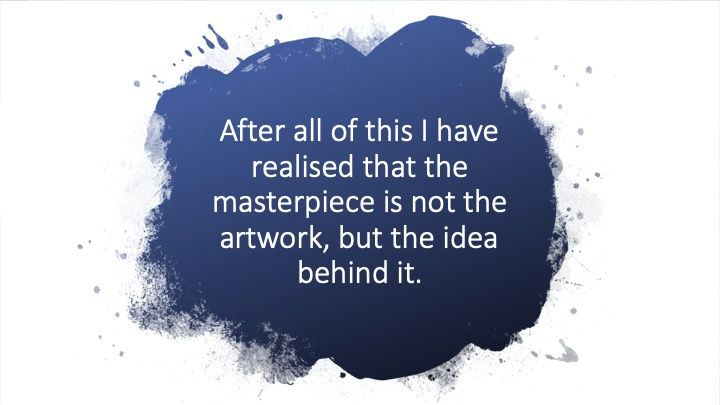
Pecha Kucha
-
Title
-
This is when my mind goes all over the place is it a Masters piece, a piece of work created by someone who has a master’s? Or a work titled ‘masterpiece’, if it is named a masterpiece, then it must be one, right?
-
A Masterpiece, actual definition ‘a work of outstanding artistry, skill, or workmanship’ The word masterpiece has so many definitions, it could also be looked at as something no one else has ever done before, something unique, different.
-
I’m going to talking about a Robert Rauschenberg, he was an American painter and graphic artist whose early works anticipated the pop art movement. Rauschenberg was both a painter and a sculptor, and had pieces called the combines which are a combination of the two, but he also worked with photography, printmaking, papermaking and performance.
-
The first piece I’m going to talk about is Robert Rauschenberg’s white painting. Robert did a series of these white paintings all different from each other, but all the same. He created a 1 panel, 2 panel, 3 panel, 4 panel and a 7 panel, creating an series of White Paintings
-
He didn’t make them all by himself. And in fact, that whole idea that it doesn’t matter much who makes them is key to the work of art. Some of the panels were reversed, they were paintings which had been stripped away back to the original which canvas and then white painted over the top. Others were blank to begin with. “Paint them so they look like they haven’t been painted. No hand marks, just put a coat of paint on them.”
-
To keep them in the condition he finally wanted them in, he used to paint them regularly, to keep them in a pristine condition. The all-white surfaces eliminated gesture and denied all possibility of narrative or external reference. The paintings include no figuration and no symbolism. They are empty—but not empty.
-
He wanted the white as it reflects changes in the light and the change effects of shadows in the surrounding space, which then makes the piece more than a painting, but could also be seen as a interactive piece.
-
Through this work he was inspired to create another piece and pursue the corresponding notion of silence and ambient sound in music, so had a pianist playing quietly at the piano without touching the keys for four minutes and thirty-three seconds so that incidental sounds in the surrounding environment determined the content of the piece.
-
John Cage wrote a statement accompanying the white painting. And the statement went "To whom: no subject, no image, no taste, no object, no beauty, no message, no talent, no technique, no why, no idea, no intention, no art, no objection, no feeling, no black, no white, no and."
-
From this Robert said “I always thought of the white paintings as being not passive, but very – well, hypersensitive. So, one could look at them and see how many people were in the room by the shadows cast, or what time of day it was.”
-
The White Paintings were initially exhibited in the dining hall of Black Mountain College in the summer of 1952 as a backdrop for The Event (Cage's Theatre Piece no. 1) - a multimedia performance combining poetry reading, dance, music and artwork placed around the room.
-
During the performance, four panels of the White Paintings were suspended from the ceiling in the form of a cross with films and slides projected on them, and Rauschenberg played records on an old Edison horn recorder.
-
From looking at what work was inspired by the white paintings I came across Erased de Kooning Drawing, it is an early work of Robert Rauschenberg: an almost blank piece of paper in a simple gilded frame. The work was created in 1953 two years after the white paintings again by Rauschenberg
-
This work involved him erasing a drawing he obtained from the American artist Willem de Kooning. Rauschenberg set out to discover whether an artwork could be produced entirely through erasing—an act focused on the removal of marks rather than their accumulation of them.
-
Rauschenberg first tried erasing his own drawings, and these were not going to plan, and ultimately decided that in order for the experiment to succeed he had to begin with an artwork that was undeniably significant in its own right.
-
He approached Willem de Kooning, an artist for whom he had tremendous respect for, and asked him for a drawing to erase. Somewhat reluctantly, de Kooning agreed. He gave Rauschenberg a piece which was finished but, not a piece which he treasured and one which would take great difficulty to erase, therefore this one.
-
White Paintings relate to my most recent work on dementia, which is why I pick this piece to begin with, as in the end dementia is leaving your brain like a white canvas, with nothing left there to see or even relate to anymore, Blank.
-
But while looking into this piece and discovering another piece my Rauschenberg, I realise that this piece relates to my work as well. This piece was reversed, manually erased, the lines were taken away, a lot like what dementia does to the brain.
-
His work has shown me that maybe I should think about the process of how I’m going to make art more than the result. I could try reversing something, erase something, or maybe starting off with a white canvas will inspire me to create something.
-
My main realisation is that after all this the masterpiece is not the artwork, but the idea behind it, the execution can always be good, but to be great, it must have a great reasoning behind it.
-
The End
